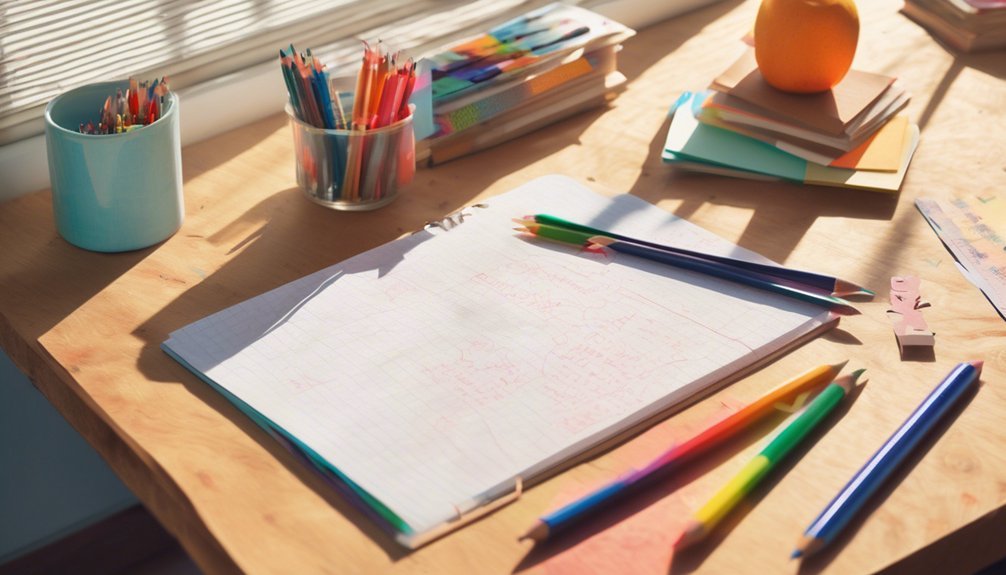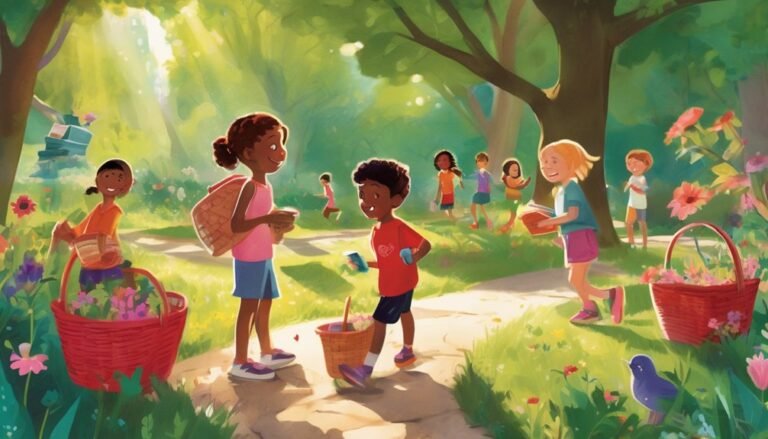How to Create a Word Search Puzzle From Scratch
Creating a word search puzzle can feel like crafting a secret garden, where each hidden word blooms with discovery. You might wonder how to start this engaging endeavor. First, you need to pick a theme that resonates. From there, you'll gather words that fit your chosen concept, ensuring a mix of lengths for challenge and variety. But how do you transform those words into a cohesive and enjoyable grid? Let's explore the steps together.
Key Takeaways
- Choose a captivating theme that resonates with your audience to enhance engagement and connection.
- Brainstorm and refine a list of relevant words, mixing short and long terms for a balanced challenge.
- Design a spacious grid layout ensuring symmetry and even spacing for a visually appealing puzzle.
- Strategically place longer words first, then fill in shorter words, using overlapping letters and backward placements for complexity.
- Review the grid for consistency, adjust letter placements, and add final touches to ensure a complete and engaging puzzle.
Choosing a Theme for Your Word Search
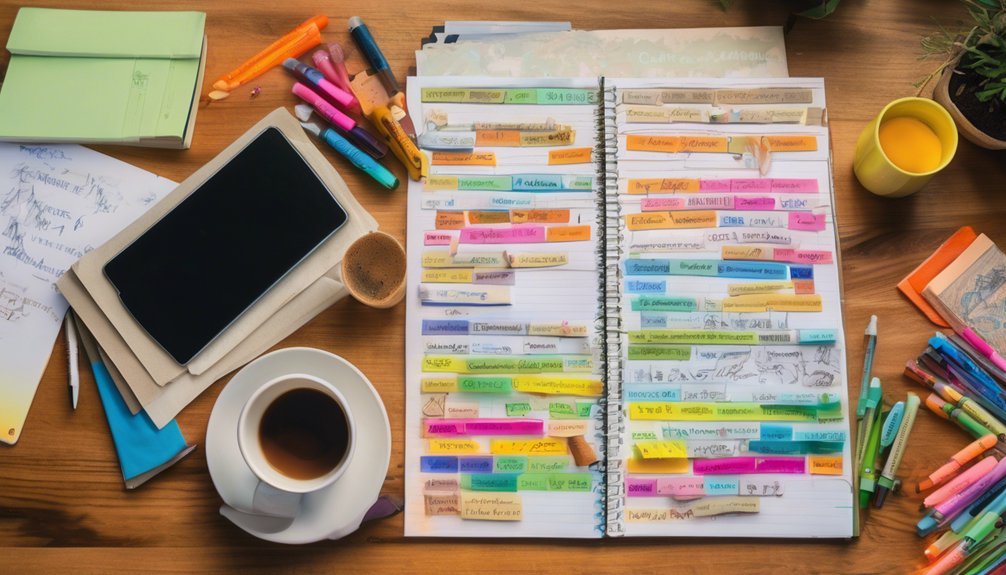
Choosing a theme for your word search puzzle is like selecting the perfect backdrop for a painting; it sets the tone and engages your audience.
Start by exploring theme inspiration that resonates with your group. Consider seasonal events, hobbies, or shared interests—these elements foster a sense of belonging. It's crucial to align with audience preferences, so think about what excites them.
A puzzle themed around a favorite movie or local history can spark joy and connection. You'll want to create an experience that feels personal and inviting, encouraging everyone to dive into the challenge.
The right theme not only captivates but also transforms your word search into a memorable adventure they'll want to share and revisit.
Brainstorming and Selecting Words
Words are the heart of your word search puzzle, and selecting them requires a thoughtful approach. Start by brainstorming a list of relevant terms related to your theme. Consider word length; a mix of short and long words keeps things interesting.
Aim for a balance—too many lengthy words can frustrate players, while too many short ones might make it too easy. Pay attention to frequency patterns; choose words that players are likely to recognize and want to find. This connection fosters a sense of belonging as they engage with familiar terms.
After you compile your list, refine it by ensuring a diverse range of words that will challenge yet delight your audience. Happy puzzling!
Designing Your Puzzle Grid
After you've curated your list of words, it's time to bring your puzzle to life by designing the grid. Start by sketching a grid layout that's spacious enough to accommodate your words while ensuring puzzle symmetry.
A balanced grid not only enhances aesthetics but also provides a satisfying challenge for solvers. Consider using a square or rectangular shape, depending on your word length and quantity. Aim for even spacing between letters, which fosters a sense of harmony throughout the puzzle.
Placing Words in the Grid
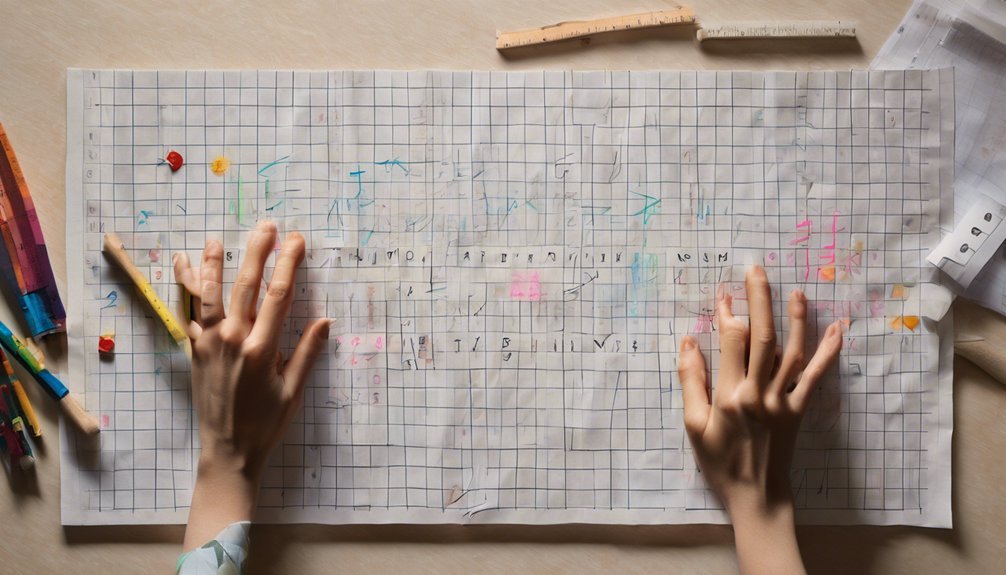
Placing your selected words into the grid can be a thrilling part of puzzle creation. You'll want to think about various word placement strategies that enhance the challenge. For instance, consider placing words horizontally, vertically, or diagonally. Each grid orientation option offers unique twists and turns that can keep solvers engaged.
Start with longer words, as they'll help establish a foundation for your layout. Once you've anchored these, fill in shorter words around them, using overlapping letters to maximize space.
Don't shy away from using backward placements to increase complexity and fun! As you place each word, envision the joy your puzzle will bring to others, fostering a sense of connection as they search for each hidden term.
Filling in the Empty Spaces
Once you've strategically positioned your words, it's time to tackle the empty spaces that remain in the grid. You'll want to employ effective filling methods to ensure your puzzle feels complete and engaging.
Consider using random letters, but be mindful of space optimization; you don't want to create confusing overlaps. Think about your audience—incorporate letters that align with the theme or context of the words you've chosen. This not only enhances the puzzle but fosters a sense of belonging for those solving it.
Finalizing the Puzzle
To finalize your word search puzzle, step back and examine the grid with a critical eye. Look for any inconsistencies or awkward placements that might disrupt the flow. This is your chance to add those final touches that will elevate your puzzle's aesthetics.
Consider adjusting the letters to create a balanced visual appeal, ensuring that the words fit harmoniously within the grid. You might even want to tweak the placement of some words to enhance the challenge without making it frustrating.
Creating an Answer Key
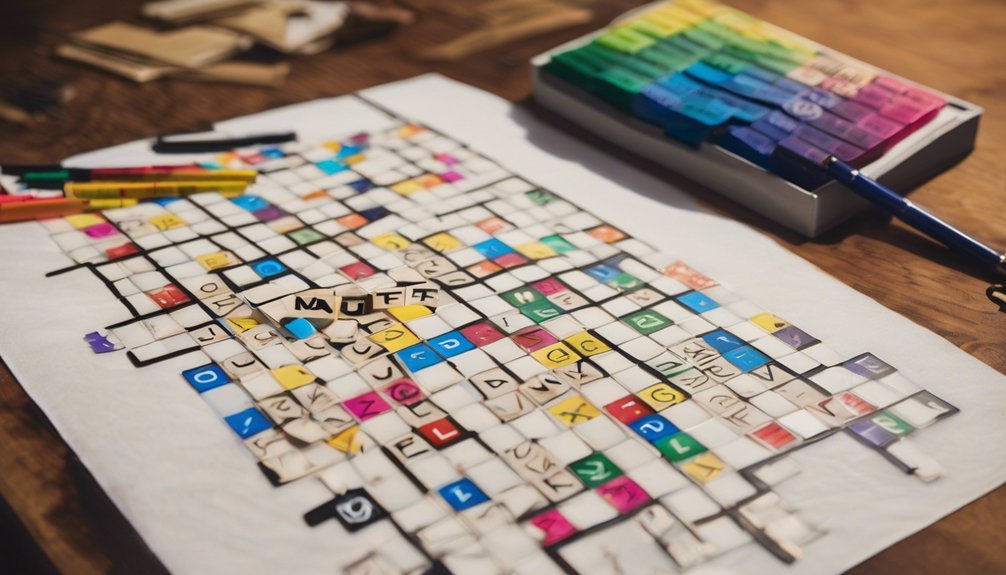
Creating an answer key for your word search puzzle is essential for both players and yourself, as it simplifies the process of checking completed grids.
An effective answer key not only helps you verify answers but also enriches the player's experience.
Consider these answer key formats based on puzzle difficulty:
- Grid format: Overlay your puzzle with highlighted words for clarity.
- List format: Provide a simple list of words, indicating their starting points and directions.
- Color-coded format: Use colors to differentiate between easy and hard words, making it visually engaging.
Adding Decorative Elements
When designing your word search puzzle, incorporating decorative elements can elevate its appeal and enhance the overall player experience. Think about how color schemes and font styles can create a more inviting atmosphere. You want your puzzle to resonate with players, making them feel connected.
Here's a simple table to inspire your design choices:
| Element | Description | Example |
|---|---|---|
| Color Schemes | Use complementary colors | Blue and yellow |
| Font Styles | Choose playful or elegant fonts | Comic Sans, Arial |
| Borders | Add frames or patterns | Dotted or floral |
| Backgrounds | Subtle textures or images | Soft gradients |
These elements foster a sense of belonging and excitement, making your puzzle not just a game, but a delightful experience.
Testing Your Puzzle
After you've crafted your word search puzzle, it's crucial to put it through its paces to ensure everything clicks. You want your puzzle to be challenging yet enjoyable, so employing effective testing methods is key.
Here's how to refine your creation:
- Solve It Yourself: Experience the puzzle firsthand, noting any tricky spots or errors.
- Get Feedback: Invite friends or family to test it out; their insights can highlight areas needing improvement.
- Adjust Puzzle Difficulty: Tweak the word placement or the list of words to suit your target audience's skill level.
Sharing Your Word Search With Others
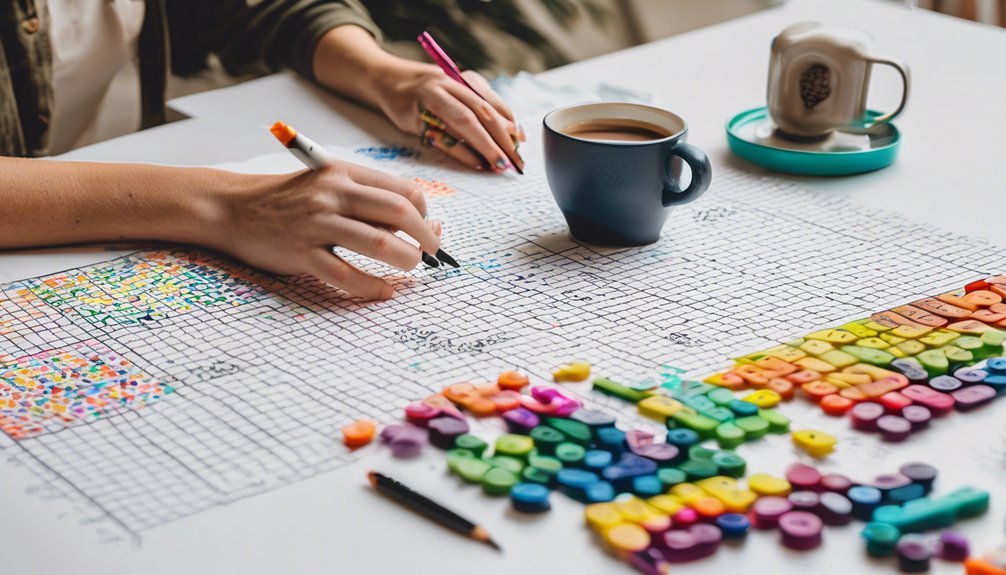
Once you've polished your puzzle and received valuable feedback, it's time to share your word search with others.
Consider sharing online through social media platforms or puzzle-sharing websites, where you can connect with fellow enthusiasts. You might create an interactive experience by hosting events, like game nights or community gatherings, where participants can solve the puzzle together.
This not only fosters a sense of belonging but also sparks lively discussions and friendly competition. Don't forget to encourage feedback; it can help you refine future puzzles.
Whether you're sharing digitally or in person, your word search can bring joy and connection, creating memorable moments for everyone involved.
Frequently Asked Questions
Can I Use Words in Multiple Languages for My Puzzle?
Absolutely! You can create multilingual puzzles that celebrate language diversity. Mixing words from different languages not only enriches your puzzle but also invites everyone to connect and engage, fostering a sense of belonging among diverse participants.
What Software or Tools Can Help Create a Word Search?
You'll find online generators perfect for quickly creating word searches, while design software offers customizable features to enhance your puzzles. Embrace these tools to craft engaging experiences that connect your audience through shared fun and discovery.
How Long Does It Typically Take to Create a Puzzle?
When you're in the thick of it, creating a puzzle can take anywhere from 30 minutes to several hours. Your puzzle complexity and time management skills will greatly influence how long it actually takes.
Are There Any Copyright Issues With Using Popular Words or Phrases?
When using popular words or phrases, you should consider fair use and public domain rules. If you're unsure, it's wise to create original content or seek permission to avoid potential copyright issues.
Can I Publish My Word Search Commercially?
If you're dreaming of sharing your word search with the world, remember to check publishing rights. Securing a commercial license can transform your puzzle from a personal treasure into a shared adventure for all.
Conclusion
Now that you've mastered the art of crafting a word search puzzle, you're ready to unleash your creativity like Da Vinci with a blank canvas. Each carefully placed word invites puzzlers on a treasure hunt, sparking joy and a bit of friendly competition. So dive in, share your creation, and watch as others embark on this delightful quest. Remember, in the realm of word searches, the only limit is your imagination—so let it run wild!

